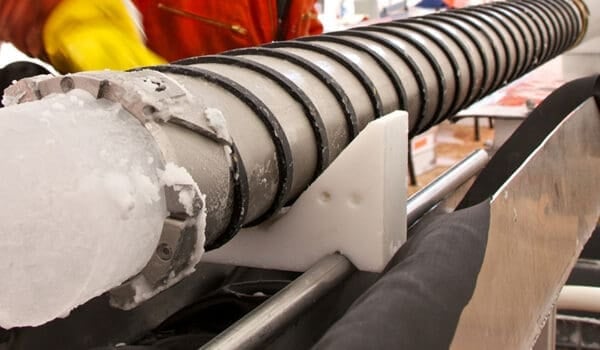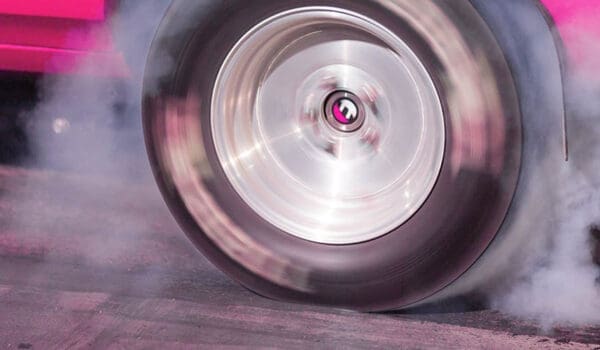New study links an increase in black carbon in Antarctic ice cores to fires on New Zealand more than 700 years ago.
Several years ago, scientists from the Desert Research Institute (DRI) in Nevada and the British Antarctic Survey noticed a substantial increase in levels of black carbon (BC, or soot) in ice cores from Antarctica. It began around the year 1300 and continued to the modern day. These light-absorbing particles comes from biomass burning such as forest fires – or in our age, fossil fuel combustion.

The pre-industrial world was not pristine
An international team of scientists from the United Kingdom, Austria, Norway, Germany, Australia, Argentina, and USA set out to uncover the origins of the unexpected black carbon increase captured in the Antarctic ice.
The team’s findings, published in Nature, point to an unlikely source: ancient Māori land-burning practices in New Zealand. This burning was conducted at a scale that impacted the atmosphere across much of the Southern Hemisphere, and dwarfed all other pre-industrial emissions in the region during the past 2,000 years.
“The idea that humans at this time in history caused such a significant change in atmospheric black carbon through their land clearing activities is quite surprising,” says Dr. Joe McConnell, lead author and research professor of hydrology at DRI. “We used to think that if you went back a few hundred years you’d be looking at a pristine, pre-industrial world, but it’s clear from this study that humans have been impacting the environment over the Southern Ocean and the Antarctica Peninsula for at least the last 700 years.”
Tracing black carbon
To identify the source of the black carbon, the study team analyzed an array of six ice cores collected from James Ross Island and continental Antarctica using DRI’s unique continuous ice-core analytical system. The method used to analyze black carbon in ice was first developed in McConnell’s lab in 2007.
The ice core from James Ross Island showed a notable increase in black carbon beginning around the year 1300. Levels tripled over the 700 years that followed and peaked during the 16th and 17th centuries, but black carbon levels at sites in continental Antarctica during the same period of time stayed relatively stable.

Dr. Andreas Stohl of the University of Vienna and formerly NILU – Norwegian Institute for Air Research, led atmospheric model simulations of the transport and deposition of black carbon around the Southern Hemisphere.
“From our models and the deposition pattern over Antarctica seen in the ice, it is clear that Patagonia, Tasmania, and New Zealand were the most likely points of origin of the increased black carbon emissions starting about 1300,” said Stohl.
Dr. Sabine Eckhardt from NILU performed the simulations, using the FLEXPART model. FLEXPART was originally developed to monitor and calculate the spread of radioactive emissions. It has since been developed to calculate how e.g. greenhouse gases, black carbon from forest fires and ash clouds from volcanic eruptions spread in the atmosphere.
“We can also use FLEXPART find the emission sources of pollutants and estimate the amount emitted, as Dr. Stohl describes above”, explains Eckhardt.
New Zealand the most likely source
After consulting paleofire records from each of the three regions, only one viable possibility remained: New Zealand. Charcoal records from there showed a major increase in fire activity beginning about the year 1300. This date also coincided with the estimated arrival, colonization, and subsequent burning of much of New Zealand’s forested areas by the Māori people.
This was a surprising conclusion, given New Zealand’s relatively small land area and location more than 4500 miles (7200 km) from Antarctica. Could smoke really have travelled to reach the ice core site on James Ross Island?
“Yes”, says Sabine Eckhardt. “One of NILU’s main research areas is investigating black carbon emissions to the Arctic. We do this by measuring different tracers at the Zeppelin observatory on Svalbard, and combines this with transport modelling. In the past we have discovered and documented many events of black carbon from forest fires being transported from both North America and Eurasia to the pristine Arctic. Thus, it is interesting to get the opportunity to also study cases in the other hemisphere.”
Research impacts
These results have important implications for our understanding of Earth’s atmosphere and climate. Modern climate models rely on accurate information about past climate to make projections for the future, especially on emissions and concentrations of light-absorbing black carbon linked to Earth’s radiative balance.
It is often assumed that human impacts during pre-industrial times were negligible compared to background or natural burning. This study provides new evidence that human activities have impacted Earth’s atmosphere and possibly its climate far earlier, and at scales far larger, than previously imagined.
“From this study and other previous work our team has done on 2,000-year old lead pollution in the Arctic from ancient Rome, it is clear that ice core records are very valuable for learning about past human impacts on the environment,” McConnell says. “Even the most remote parts of Earth were not necessarily pristine in preindustrial times.”









